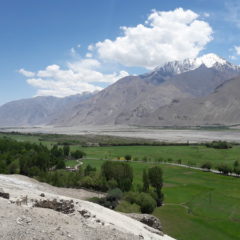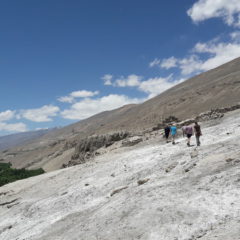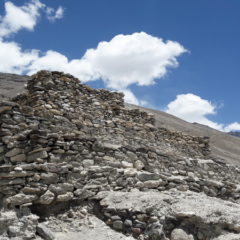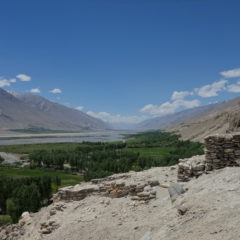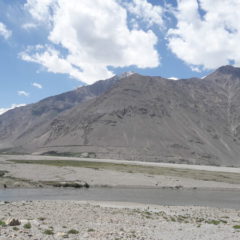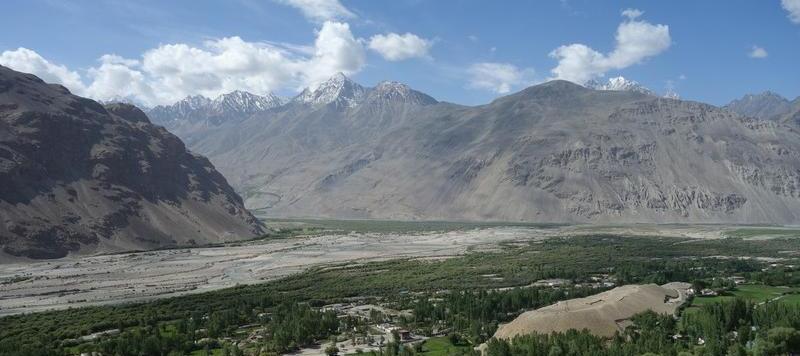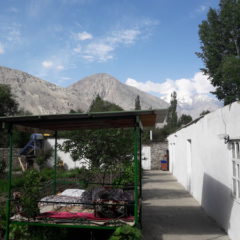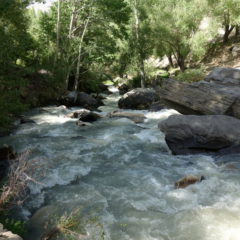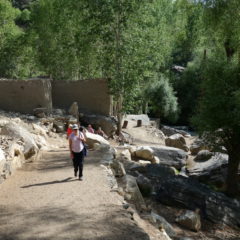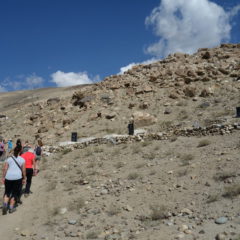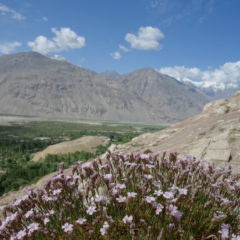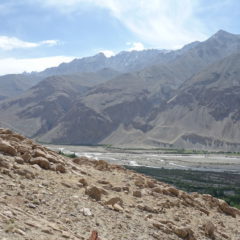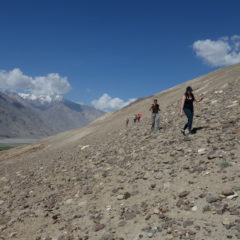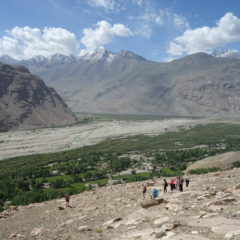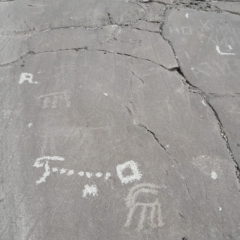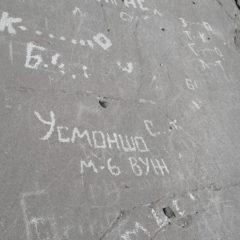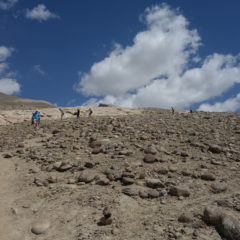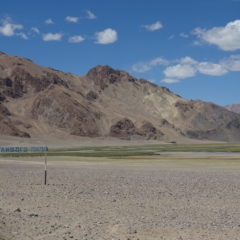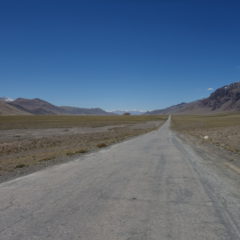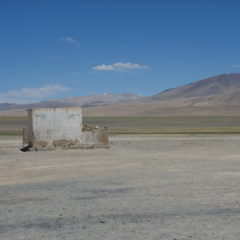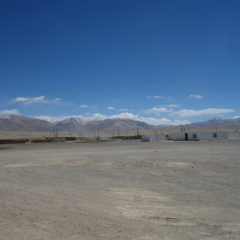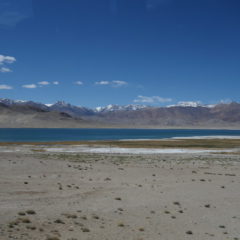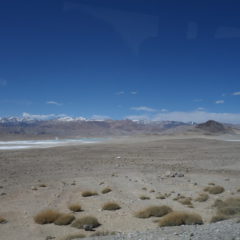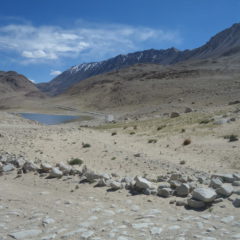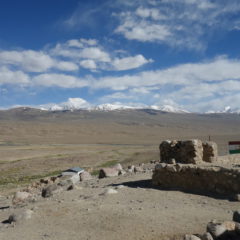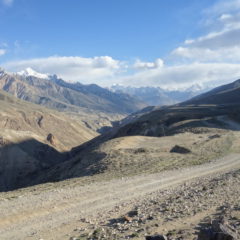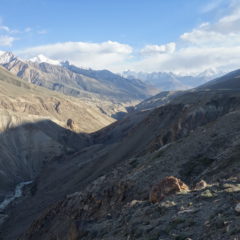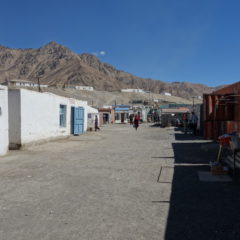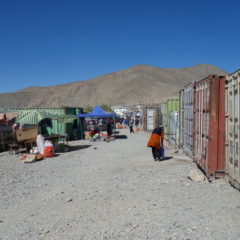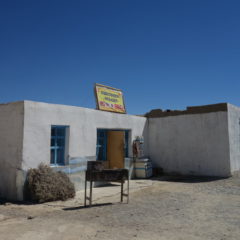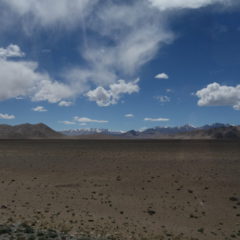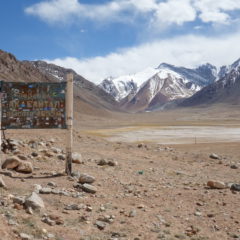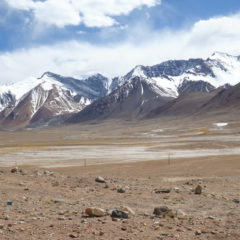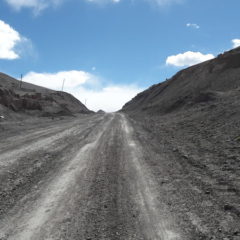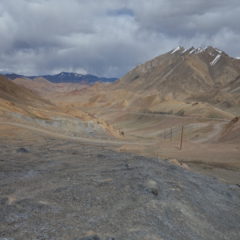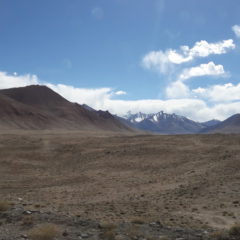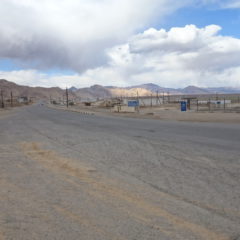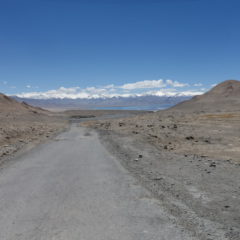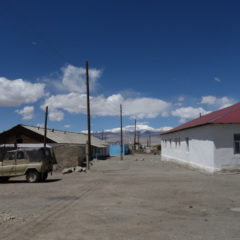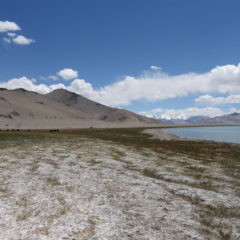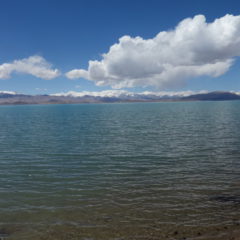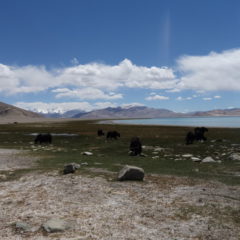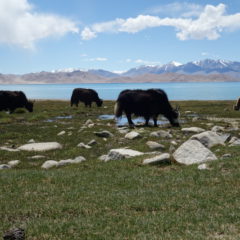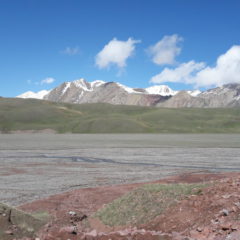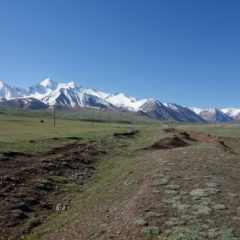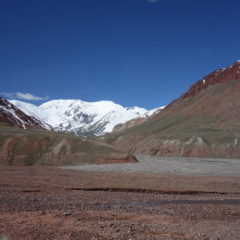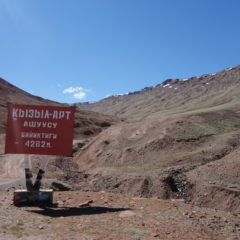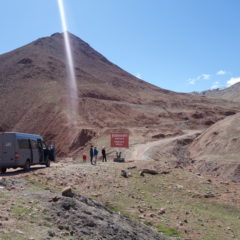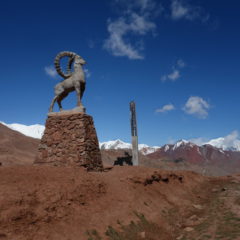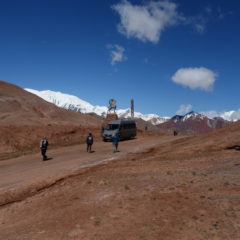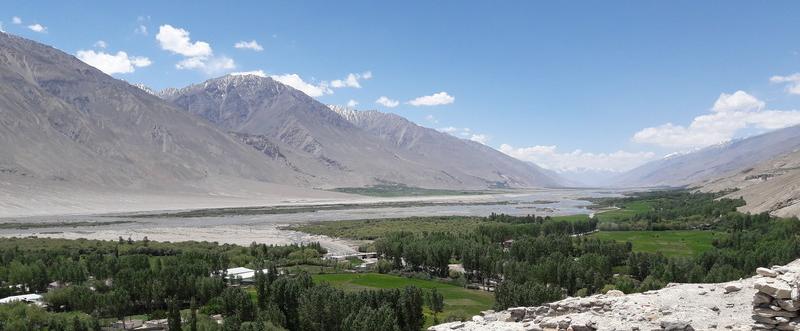 Our next stop en-route was near Vrang village.
Our next stop en-route was near Vrang village.
We left the van and made our way through a flowering meadow towards the mountain slope. A few jumps over irrigation ditches and a bit of an uphill scramble later we were standing on a small plateau, overlooking the Panj river valley – and next to Vrang’s Buddhist Stupa (as it is commonly called).
To me the stupa resembled a small stepped stone pyramid – and really had nothing in common with any of the Buddhist stupas, I had seen anywhere in Asia. To me something did not add up here. In retrospect (and some museum visits later) my gut feeling is, that this may well have been a Zoroastrian place of worship … be it towards the heaven (air) or as a fire temple. The stupa may also indeed represent an odd mix of both Buddhism and Zoroastrianism. Indeed over the millennia both religions had made their pass through the region (with some influence still present today) – so my gut may well be right … but then – I leave any conclusions to those with a proper background on history and religions.
What I can say though, views were once again amazing. This time we were not as high as earlier on today, however the river was bigger now, with loads of green around the shores – so there was no need for a vantage point from high above.
Oh … and also … there were some amazing shopping opportunities here … from hats all the way to precious stones – a new pendant anyone?

